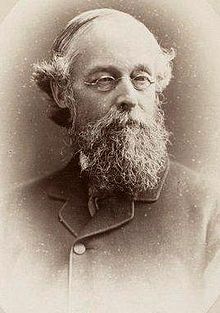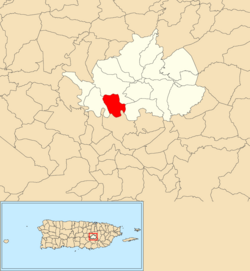아연 L-카르노신
Zinc L-carnosine아연 L-카르노신(베타-알라닐-L-히스토시디나토 아연[1])(N-(3-아미노프로피오닐)-L-히스토시나토 아연[2])은 흔히 아연 카르노신(polaprezinc)이라고도 하며,[3] 하마리 화학(주)에서 발명한 아연과 L-카르노신의 점막산염이다[4][5].[6][7] 중합체 성질의 4중 1:1 복합체다.[6] 질량 기준으로 아연 23%, L-카르노신 77%가 함유돼 있지만 아연 카노신은 분자로 아연과 L-카르노신의 혼합물이 아니다.[8]
위궤양 치료에 임상적으로 사용되는 일본과 한국에서 의학적 처방이 필요한 공인 의약품이다.[3][9] 또한 방사선 치료 중과 후에 구강 점막염, 식도염, 프록티염, 미각 변화 및 피부염에 효과가 있다는 임상 연구 결과도 나왔다.[10][11] 미국에서는 아연 카노신이 새로운 식이 성분으로 규제되고 있으며, 여기서 미국-FDA와의 통지가 필요하다.[12] 호주에서는 보완의학으로서 규제되고 있다.[13] 캐나다에서는 천연건강제품으로 규제되고 있다.[14]
작용기전
위장
그것의 작용 메커니즘은 산소 급진적 청소, 항산화, 위장 손상 치유의 가속이다.[3] 그것은 ROS-quenching 활동을 보여준다.[4] 급속한 탈부착 없이 뱃속에 남아 궤양성 병변에 특히 잘 붙을 수 있으며, 이후 L-카르노신과 아연이 분비되어 궤양을 치유한다.[6] 점액 생성을 촉진하고 위점막의 건전성을 유지하는 것으로 나타났다.[5] 항산화막 안정작용에 의한 프로스타글란딘 독립적인 세포보호 효과에 의한 위점막의 동점선을 유지하며, 상처 치유 작용에 의한 손상된 조직의 회복을 촉진한다.[6]
열충격 단백질과 케모카인을 조절하고, 돛대 세포를 안정시켜 세포절제를 한다.[10] 위산의 분비에 영향을 주지 않고 그렇게 한다.[10] 다양한 손상 요인에 의해 유발되는 큰 장 점막에서 염증성 과정 발달을 막기 위해 Hsp70의 과다압박이 발견되는 등 Hsp70표현을 자극할 잠재력을 갖고 있다.[15] 조사 후 p53, p21, Bax의 발현과 장내 사멸을 감소시킨다.[10] 항산화, 항염증, 게놈 안정성 강화 효과가 있어 위장암 발생 예방에 잠재력이 있다.[9]
비교
궤양에 대한 치유효능은 다른 아연복합체, 프리 L-카르노신, 아연 D-카르노신[6](소비자에게 보충제로 판매되지 않음)보다 월등히 높다. 아연 L-카르노신의 약리학적 활성은 주로 아연 이온에 기인하는 것으로 보이며, 추정컨대 L-카르노신 자체의 작용과 함께 L-카르노신을 이용하여 궤양으로 효과적으로 운반된다.[6] 이와는 대조적으로, L-카르노신과 아연의 단순한 혼합은 위 전체에서 L-카르노신과 아연이온의 급속한 확산에 기인한 것으로 추측된다.[6] 임상 전 데이터에 따르면 점막염의 경우 아연 L-카르노신이 황화아연보다 우수하다.[10]
기타
다양한 병태생리학적 조건에서 뼈 형성에 자극적인 효과와 뼈 손실에 대한 회복 효과가 있다.[16]
사용법
아연 L-카르노신은 경구용[8][17] 린스, 로젠지 또는 임시로 사용되어 왔다.[10] 대표적인 임상 경구 투여량은 하루 150mg/day로 34mg 아연과 116mg L-카르노신을 함유하고 있다.[8][17] (성인의 모든 선원의 총 아연 섭취에 대한 허용 상한 섭취 수준(UL)은 40 mg/일이다.)[18]
구강용 린스로서 하루에 3~4회 사용하였으며, 삼키거나 삼키지 않고 사용되어 총 150 mg/일의 양을 제공하였다.[10] 5%의 알긴산나트륨 용액이 사용되었다.[10] 또는 하루 4회 18.75mg을 함유한 로젠지로 사용되어 왔다.[10] 또한 위트솔을 베이스로 하여 75mg의 임시변통으로도 사용되어 왔다.[10]
안전
일반적인 임상 경구 투여량 150mg/day에서 양호한 임상 준수 상태가 관찰되었으며, 증상 부작용은 보고되지 않았다.[6] 부작용 발생률은 추가 유익성 없이 고선량 아연 L-카르노신(300 mg/일)에서 더 높았으므로 고선량은 권장하지 않는다.[19] 부작용은 아연 섭취량과 관련이 있다.[19]
일본 제품 모노그래프에 따르면 12세 미만 아동, 임산부, 젖먹이 여성의 안전성이 확립되지 않고(사용경험이 없음), 일반 노인 인구의 소화계통 기능이 저하되어 있어 노인 인구의 사용수준을 하루 100mg 아연 L-카르노신에서 제안·권고하고 있다.이온; 그리고 간 기능이 떨어지는 사람들은 의료 감독 하에 있어야 한다.[20]
구리가 부족한 사람들도 의료 감독 하에 있어야 한다.[21] 아연 L-카르노신이 혈청 아연 농도의 증가를 유발했지만 혈청 구리 농도와 구리:진크 비율이 감소해 기존 구리 결핍증 사례가 악화됐다.[8] 완화제로써, 1일 2mg/day 구리를 글리신 첼산염으로 보충하면 안전하게 Cu-Zn 과산화 분해효소 활성도가 증가한다.[22]
방사선 치료에 대한 종양 반응이 감소했다는 증거는 없다.[10]
참고 항목
참조
- ^ Yamaguchi M (1995). "beta-Alanyl-L-histidinato zinc and bone resorption". General Pharmacology. 26 (6): 1179–83. doi:10.1016/0306-3623(95)00008-o. PMID 7590105.
beta-Alanyl-L-histidinato zinc (AHZ), in which zinc is chelated to beta-alanyl-L-histidine, is a new zinc compound.
- ^ Yoshikawa T, Naito Y, Kondo M (1993). "Antioxidant therapy in digestive diseases". Journal of Nutritional Science and Vitaminology. 39 Suppl: S35–41. doi:10.3177/jnsv.39.supplement_s35. PMID 8164065.
Zinc-carnosine (Z-103), N-(3-aminopropionyl)-L-histidinato zinc, is a chelate compound consisting of zinc ion and L-carnosine
- ^ a b c Takei M (2012). "[Development of polaprezinc research]". Yakugaku Zasshi (in Japanese). 132 (3): 271–7. doi:10.1248/yakushi.132.271. PMID 22382829.
Polaprezinc (Promac(®), Zeria Pharmaceutical Co., Ltd.), a chelate compound consisting of zinc and L-carnosine, is a zinc-related medicine approved for the first time in Japan, which has been clinically used to treat gastric ulcers. Its mechanism of action is believed to oxygen radical scavenging, anti-oxidation, and acceleration of wound healing.
- ^ a b Palileo C, Kaunitz JD (2011). "Gastrointestinal defense mechanisms". Current Opinion in Gastroenterology. 27 (6): 543–8. doi:10.1097/MOG.0b013e32834b3fcb. PMC 5667561. PMID 21897225.
The mucosal protective drug polaprezinc exhibits ROS-quenching activities.
- ^ a b Dajani EZ, Klamut MJ (2000). "Novel therapeutic approaches to gastric and duodenal ulcers: an update". Expert Opinion on Investigational Drugs. 9 (7): 1537–44. doi:10.1517/13543784.9.7.1537. PMID 11060758. S2CID 28302630.
•Polaprezinc and nocloprost are also mucosal protective drugs, which are in clinical development.
•Its mechanism of action is not totally known, but it has been shown to stimulate mucus production and to maintain the integrity of the gastric mucosal barrier [51]. - ^ a b c d e f g h i Matsukura T, Tanaka H (2000). "Applicability of zinc complex of L-carnosine for medical use". Biochemistry. 65 (7): 817–23. PMID 10951100. Retrieved 2016-06-20.
- ^ Matsukura, T; Takahashi, T; Nishimura, Y; Ohtani, T; Sawada, M; Shibata, K (November 1990). "Characterization of crystalline L-carnosine Zn(II) complex (Z-103), a novel anti-gastric ulcer agent: tautomeric change of imidazole moiety upon complexation". Chem Pharm Bull. 38 (11): 3140–6. doi:10.1248/cpb.38.3140. PMID 2085900.
- ^ a b c d Sakae K, Yanagisawa H (2014). "Oral treatment of pressure ulcers with polaprezinc (zinc L-carnosine complex): 8-week open-label trial". Biological Trace Element Research. 158 (3): 280–8. doi:10.1007/s12011-014-9943-5. PMID 24691900. S2CID 2116866.
•Patients with stage II-IV pressure ulcers for ≥ 8 weeks received 150 mg/day polaprezinc (containing 116 mg L-carnosine and 34 mg zinc) per os for a maximum of 8 weeks.
•Serum zinc levels increased significantly (P < 0.001), whereas serum copper levels (P= 0.001) and copper/zinc ratios (P < 0.001) decreased significantly. In one patient, preexisting copper deficiency deteriorated. - ^ a b Ooi TC, Chan KM, Sharif R (2017). "Antioxidant, Anti-inflammatory, and Genomic Stability Enhancement Effects of Zinc l-carnosine: A Potential Cancer Chemopreventive Agent?". Nutrition and Cancer. 69 (2): 201–210. doi:10.1080/01635581.2017.1265132. PMID 28094570. S2CID 40817163.
Zinc L-carnosine (ZnC), which is clinically used as gastric ulcer treatment in Japan, has been suggested to have the potential in preventing cancer development. Multiple studies have revealed that ZnC possesses potent antioxidant, antiinflammatory, and genomic stability enhancement effects.
- ^ a b c d e f g h i j k Doi H, Kuribayashi K, Kijima T (August 2018). "Utility of polaprezinc in reducing toxicities during radiotherapy: a literature review". Future Oncology (London, England). 14 (19): 1977–1988. doi:10.2217/fon-2018-0021. PMID 30074413.
- ^ "Zeria Of Japan Obtains Korean Approval For Ulcer Drug Polaprezinc". Pink Sheet - Informa Pharma Intelligence. Retrieved 28 May 2020.
- ^ "Lonza Announces New Dietary Supplement Ingredient PepZin GI™". New Hope Network. Retrieved 28 May 2020.
- ^ "Therapeutic Goods (Permissible Ingredients) Determination (No.1) 2020 - Volume 5". Federal Register of Legislation. Australian Government. Retrieved 28 May 2020.
- ^ "Chemical Substance - Polaprezinc". Natural Health Products Ingredients Database. Health Canada. Retrieved 28 May 2020.
- ^ Samborski P, Grzymisławski M (2015). "The Role of HSP70 Heat Shock Proteins in the Pathogenesis and Treatment of Inflammatory Bowel Diseases". Advances in Clinical and Experimental Medicine. 24 (3): 525–30. doi:10.17219/acem/44144. PMID 26467144.
•In experimental studies, overexpression of HSP70 was found to prevent the development of inflammatory process in the large intestinal mucosa provoked by various damaging factors.
•There is also a potential for pharmacological stimulation of HSP70 expression, linked (for example) to geranylgeranylacetone, polaprezinc and mesalazine. - ^ Yamaguchi M (2010). "Role of nutritional zinc in the prevention of osteoporosis". Molecular and Cellular Biochemistry. 338 (1–2): 241–54. doi:10.1007/s11010-009-0358-0. PMID 20035439. S2CID 35574730.
beta-Alanyl-L: -histidinato zinc (AHZ) is a zinc compound, in which zinc is chelated to beta-alanyl-L: -histidine. The stimulatory effect of AHZ on bone formation is more intensive than that of zinc sulfate. Zinc acexamate has also been shown to have a potent-anabolic effect on bone. The oral administration of AHZ or zinc acexamate has the restorative effect on bone loss under various pathophysiologic conditions including aging, skeletal unloading, aluminum bone toxicity, calcium- and vitamin D-deficiency, adjuvant arthritis, estrogen deficiency, diabetes, and fracture healing.
- ^ a b Sakae K, Agata T, Kamide R, Yanagisawa H (2013). "Effects of L-carnosine and its zinc complex (Polaprezinc) on pressure ulcer healing". Nutrition in Clinical Practice. 28 (5): 609–16. doi:10.1177/0884533613493333. PMID 23835365.
Forty-two patients with stage II-IV pressure ulcers for 4 or more weeks were allocated to 1 of 3 groups in order of recruitment: the control group (n = 14) was untreated, the PLZ group (n = 10) orally received 150 mg/d PLZ (containing 116 mg CAR and 34 mg zinc), and the CAR group (n = 18) orally received 116 mg/d CAR.
- ^ Institute of Medicine (US) Panel on Micronutrients (2001). Dietary Reference Intakes for Vitamin A, Vitamin K, Arsenic, Boron, Chromium, Copper, Iodine, Iron, Manganese, Molybdenum, Nickel, Silicon, Vanadium, and Zinc. ISBN 9780309072793. PMID 25057538. Retrieved 2016-06-25.
A LOAEL of 60 mg/day was divided by a UF of 1.5 to derive a UL of 40 mg/day for total intake of zinc from food, water, and supplements.
- ^ a b Tan B, Luo H-Q, Xu H, Lv N-H, Shi R-H, Luo H-S, Li J-S, Ren J-L, Zou Y-Y, Li Y-Q, Ji F, Fang J-Y, Qian J-M (2017). "Polaprezinc Combined With Clarithromycin-Based Triple Therapy for Helicobacter Pylori-Associated Gastritis: A Prospective, Multicenter, Randomized Clinical Trial". PLOS ONE. 12 (4): e0175625. Bibcode:2017PLoSO..1275625T. doi:10.1371/journal.pone.0175625. PMC 5391070. PMID 28407007.
{{cite journal}}: CS1 maint: 작성자 매개변수 사용(링크) - ^ "インタビューフォーム". Zeria Medical Site. Zeria Pharmaceutical Co., Ltd. Retrieved 28 May 2020.
Accessible only to health professionals. Text in Japanese.
- ^ "Pharmaceutical and Medical Devices Safety Information, No. 339, December 2016" (PDF). Pharmaceutical and Medical Devices Agency. PMDA, Government of Japan. Retrieved 28 May 2020.
- ^ F. Aguilar, H. Autrup, S. Barlow, L. Castle, R. Crebelli, W. Dekant, K.-H. Engel, N. Gontard, D. Gott, S. Grilli, R. Gürtler, J.-C. Larsen, C. Leclercq, J.-C. Leblanc, F. X. Malcata, W. Mennes, M.-R. Milana, I. Pratt, I. Rietjens, P. Tobback, F. Toldrá (2008). "Opinion on certain bisglycinates as sources of copper, zinc, calcium, magnesium and glycinate nicotinate as source of chromium in foods intended for the general population (including food supplements) and foods for particular nutritional uses - Scientific Opinion of the Scientific Panel on Food Additives, Flavourings, Processing Aids and Materials in Contact with Food". EFSA Journal. 6 (6): 718. doi:10.2903/j.efsa.2008.718.
{{cite journal}}: CS1 maint: 작성자 매개변수 사용(링크)


